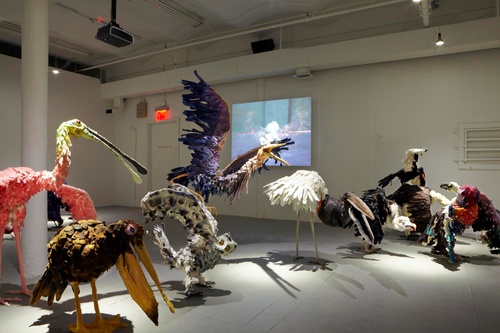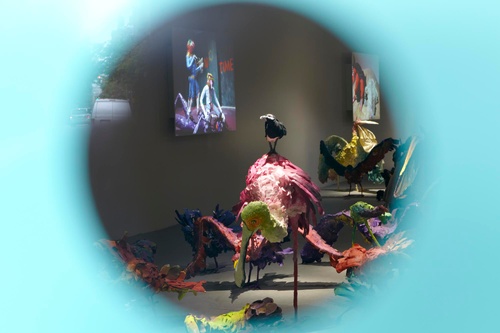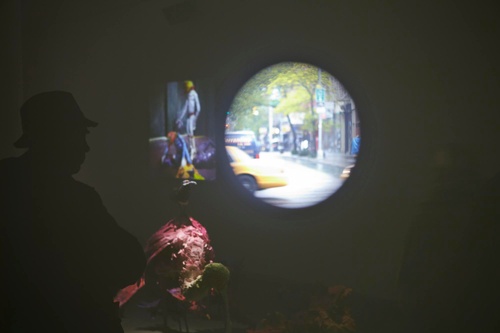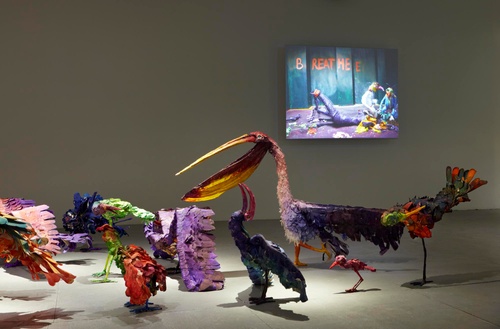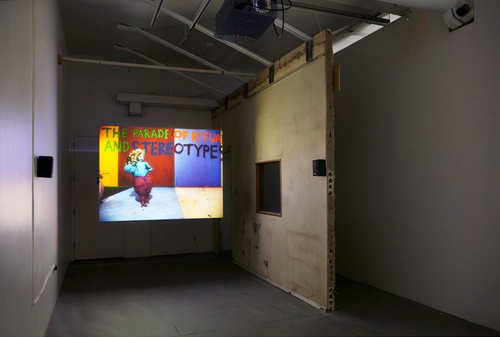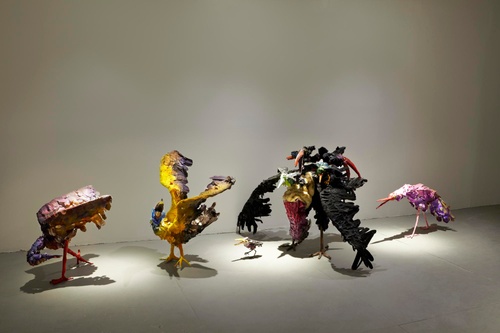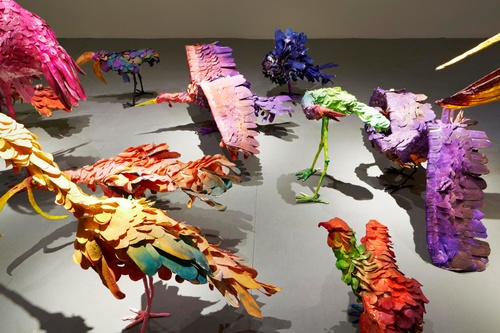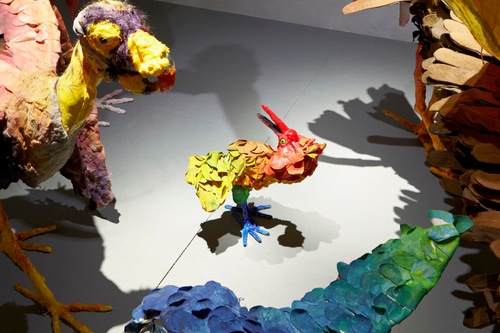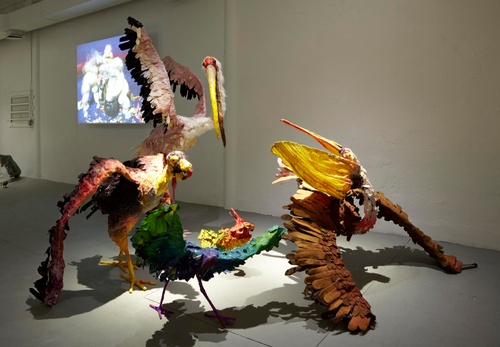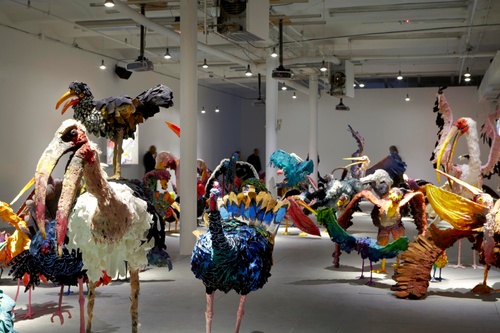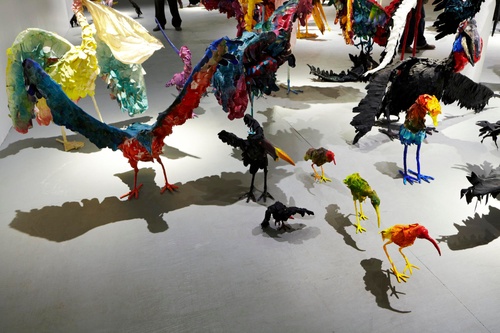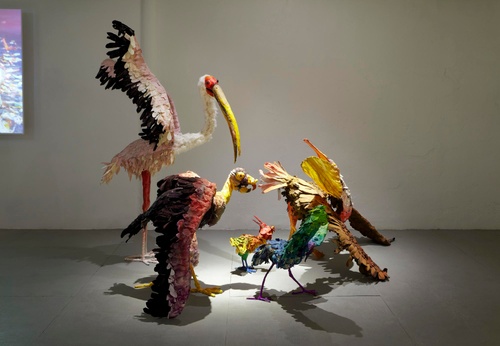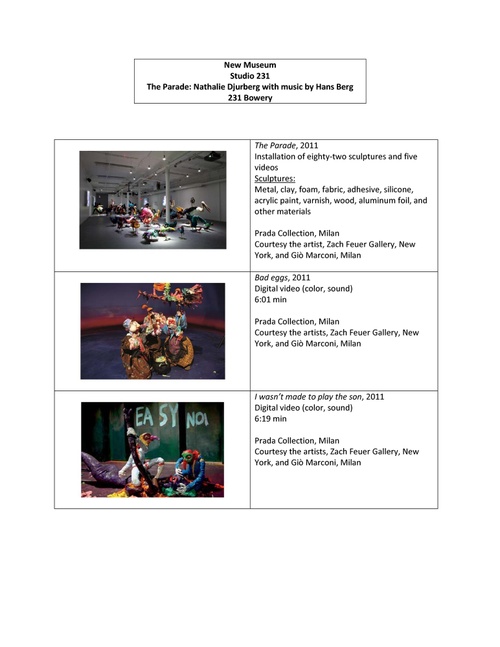The Parade: Nathalie Djurberg with Music by Hans Berg
The Parade: Nathalie Djurberg with Music by Hans Berg
Originally organized by the Walker Art Center, Minneapolis, Djurberg has adapted this spectacular installation for the New Museum’s Studio 231 space.
In the hands of Swedish artist Nathalie Djurberg, animation becomes a medium for transgressive and nightmarish allegories of desire and malcontent. Since 2001, she has honed a distinctive style of filmmaking, using the pliability of clay to dramatize our most primal urges—jealousy, revenge, greed, submission, and gluttony. Set to music and sound effects by her collaborator, Hans Berg, Djurberg’s videos plumb the dark recesses of the mind, drawing sometimes disturbing connections between human psychology and animal behavior. Increasingly, the artists’ interdisciplinary collaborations have blurred the cinematic, the sculptural, and the performative in immersive environments that pair moving images and musical compositions with related set pieces.
For her new work, The Parade (2011), Djurberg has created five captivating animations and an unnerving menagerie of more than eighty freestanding bird sculptures. Drawing on avian physiology, rituals of mating and territorial display, and the social phenomenon of flocking, she has assembled a fantastical procession of species all fashioned from modest materials such as clay, wire, and painted canvas. These hybrid, sometimes monstrous forms speak to the artist’s recurring interest in physical and psychological transformation, as well as pageantry, perversion, and abjection. In the accompanying claymation videos, humans and animals alike act out upsetting scenarios of torture, humiliation, and masquerade, further mining the interplay of brutality and guilt at the heart of Djurberg’s work. Berg’s eerie film scores—composed of elements both found and invented—suffuse the entire installation, merging to form a unified soundscape. With these films, both artists have begun to conceive narrative in spatial terms as aspects of character, setting, sound, and action migrate from one story to the next across the exhibition space.
